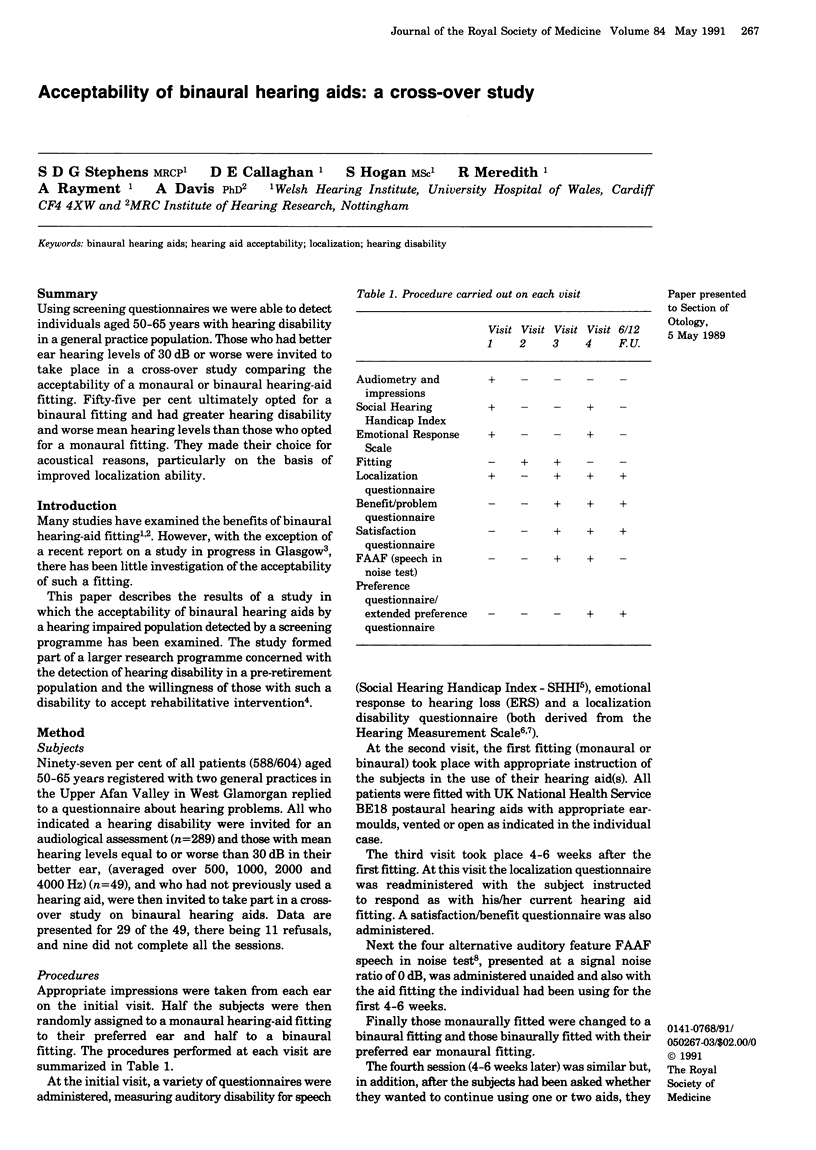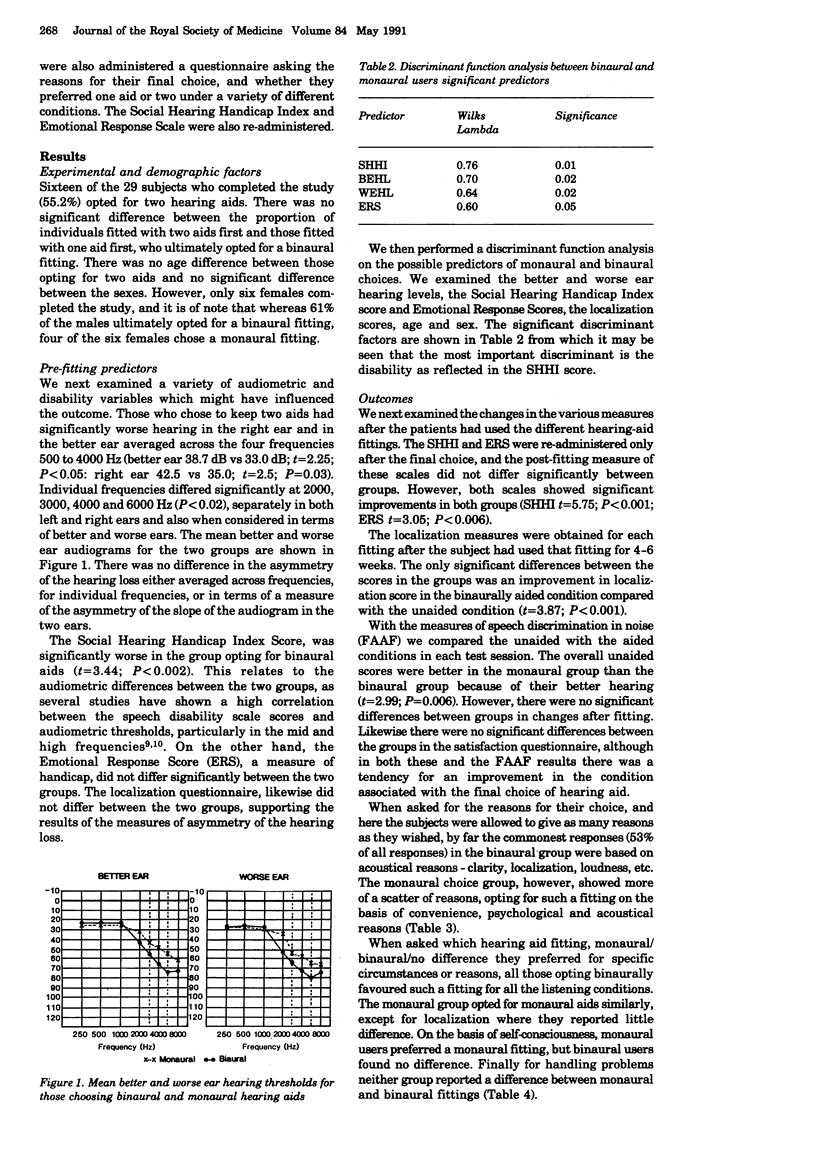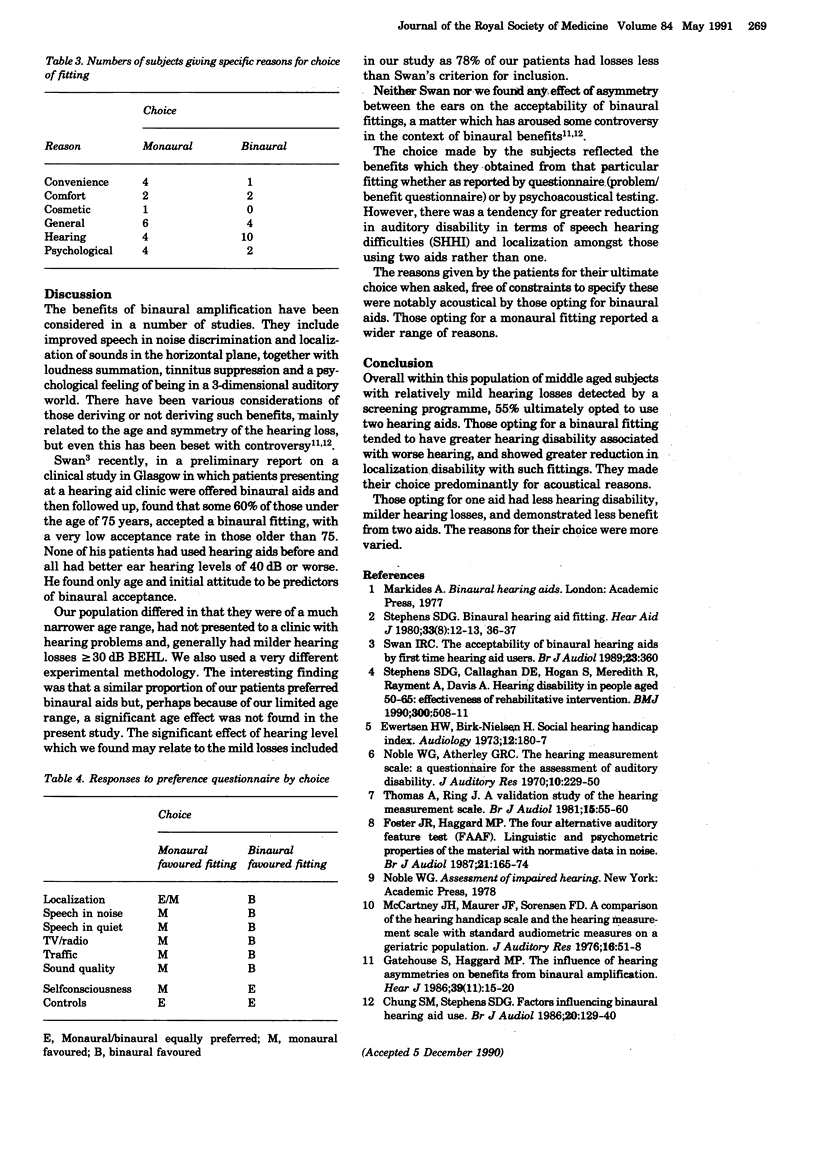Abstract
Using screening questionnaires we were able to detect individuals aged 50-65 years with hearing disability in a general practice population. Those who had better ear hearing levels of 30 dB or worse were invited to take place in a cross-over study comparing the acceptability of a monaural or binaural hearing-aid fitting. Fifty-five per cent ultimately opted for a binaural fitting and had greater hearing disability and worse mean hearing levels than those who opted for a monaural fitting. They made their choice for acoustical reasons, particularly on the basis of improved localization ability.
Full text
PDF


Selected References
These references are in PubMed. This may not be the complete list of references from this article.
- Chung S. M., Stephens S. D. Factors influencing binaural hearing aid use. Br J Audiol. 1986 May;20(2):129–140. doi: 10.3109/03005368609079006. [DOI] [PubMed] [Google Scholar]
- Ewertsen H. W., Birk-Nielsen H. Social hearing handicap index. Social handicap in relation to hearing impairment. Audiology. 1973 May-Jun;12(3):180–187. [PubMed] [Google Scholar]
- Foster J. R., Haggard M. P. The four alternative auditory feature test (FAAF)--linguistic and psychometric properties of the material with normative data in noise. Br J Audiol. 1987 Aug;21(3):165–174. doi: 10.3109/03005368709076402. [DOI] [PubMed] [Google Scholar]
- Stephens S. D., Callaghan D. E., Hogan S., Meredith R., Rayment A., Davis A. C. Hearing disability in people aged 50-65: effectiveness and acceptability of rehabilitative intervention. BMJ. 1990 Feb 24;300(6723):508–511. doi: 10.1136/bmj.300.6723.508. [DOI] [PMC free article] [PubMed] [Google Scholar]
- Thomas A., Ring J. A validation study of the Hearing Measurement Scale. Br J Audiol. 1981 Feb;15(1):55–60. doi: 10.3109/03005368109108955. [DOI] [PubMed] [Google Scholar]


